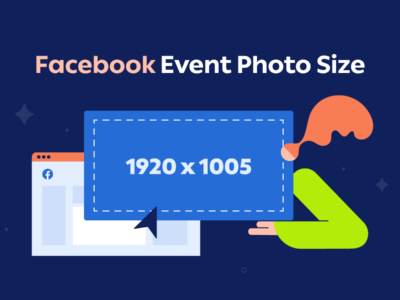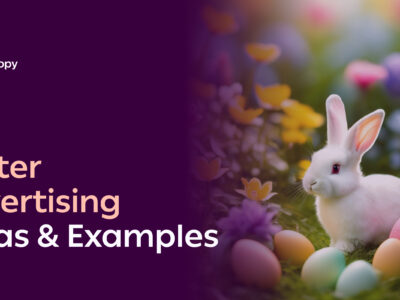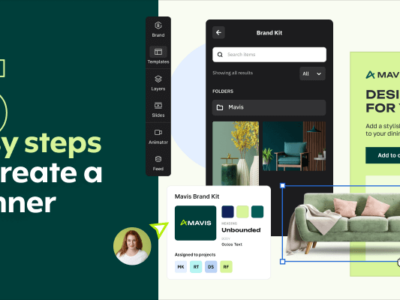Customer demand for personalization is on the rise, as recent studies suggest. In advertising, this means people want creatives tailored for them, delivered at the right time and place.
It goes without saying that businesses that don’t prioritize personalization in advertising risk falling behind the competition. But how can advertisers meet each user with a banner ad variation that speaks directly to them?
I have two words for you: dynamic ads.
While regular display ads cast a wide net, dynamic ads go straight to the target by changing their elements to fit the viewer, as their name suggests.
If you’re considering dynamic ads but want to learn more about their benefits and how they work, you’ve come to the right place.
1. What Are Dynamic Ads?
Dynamic ads or dynamic creatives are ads that change their content according to preset parameters, formulated with targeting variables that can vary in nature, from geographic and demographic data to search history and behavioral information like interests or hobbies.
This way, advertisers can show personalized display ads to the audience based on data collected about each individual user, whether it’s first-party or third-party data.
When a user meets certain conditions, the best-suited creative variation is presented to them according to the pre-established criteria.
There are different types of dynamic ads, including dynamic search ads, dynamic banner ads, and dynamic social media ads, but in this article, we will focus on dynamic banner ads.
2. Dynamic Ads vs. Regular Display Ads
When was the last time you saw a universal-size clothing item look great on different body types? It doesn’t happen, at least not that often.
Well, regular display ads, also known as static ads, are the equivalent of one-size-fits-all.
Their content does not change, but advertisers expect them to convert as many people as possible, although, just like the one-size clothing items, they’re not tailored to each individual’s needs.
Dynamic ads, on the other hand, are all about personalization. Some of their elements change to appeal to the user that is currently viewing the ad. This renders them more relevant and more likely to inspire engagement.
While dynamic ads might seem like the better choice, this isn’t always the case. In fact, you should choose the ad type that best serves your business goals.
For instance, if your business is in its early stages and you don’t have a lavish budget set aside for advertising, dynamic ads might not be the best choice.
However, if your eyes are on business growth and you want your ads to generate as many sales as possible, then you should venture into dynamic ads.
3. How Do Dynamic Ads Work?
Dynamic ads may be a bit more challenging to implement than regular display ads, but they are less complicated than you think. Setting them up requires working with a specialized ad design platform like Creatopy or a CMP paired with a DSP or ad network.
First, you will need to set up the required dynamic rules based on which the ads will be delivered. You can do so with a single ad design or upload a data feed to power your ad variations, be it a content feed or a product feed.
Next, the ad design platform or CMP you use will generate an ad tag for your campaign that you will need to import your DSP of choice. This piece of HTML or JavaScript code will tell the DSP exactly which ad variant to display to a particular user.
4. The Benefits of Using Dynamic Ads
Now that you know what dynamic ads are and how they compare to regular display ads, you’re probably wondering which are the biggest advantages of using them for your campaigns. Let’s unpack some of them:
4.1. Ad creation at scale
Building an ad campaign typically means spending a lot of time individually creating each ad design. Dynamic ads allow you to bypass unnecessary repetitive tasks and get your personalized creatives ready for publishing without the manual work.
You may create a single design and then use dynamic rules to ensure different variations are displayed to users or rely on data feeds to create hundreds of ads instantly. Regardless of the direction you pick, your time to market will shorten.
4.2. Personalized user experiences
People are pursuing personalization in every brand interaction, advertising included. They want to be seen as human beings rather than numbers (of purchases), to know they are valuable to your business.
Dynamic ads can help you deliver the personalized advertising experiences users crave through targeting options like geolocation, behavior, or demographics. Something seemingly simple, like displaying the user’s city or country in the ad copy, can make a real difference in how your ad is perceived.
4.3. Higher level of engagement
Personalized advertising connects with the audience on a deeper level. The more relevant an ad is, the more likely it is that users will engage with it—that is a given. Naturally, dynamic ads are bound to lead to a noticeable boost in engagement, which will translate into higher click and conversion rates.
Moreover, feed-based product campaigns will successfully engage users cross-device. For instance, they may start the purchase process on a desktop and abandon it midway, but if they later see an ad for that product on mobile, they will frequently engage with it.
4.4. Better use of the ad budget
We’ve already established dynamic ads cut through the clutter of generic display ads users are served daily due to their personalized nature. Since the audience is more receptive, the performance usually increases.
It’s also worth mentioning that with their improved performance also comes a higher return on investment (ROI) for advertisers, as they succeed in pulling customers down the purchase funnel with no waste in ad spending.
4.5. Low-maintenance campaigns
Dynamic ad campaigns require a smaller amount of optimization than regular display ad campaigns simply because you don’t have to adjust your creatives to appeal to a broad audience. The very fact they are adaptable to each viewer already gets a large part of the job done.
5. Dynamic Ads and Different Campaign Types
Dynamic creatives work well with different targeting options, allowing you to create diverse advertising campaigns and deliver the right message to people who are most likely to turn into customers. These are the most popular dynamic ad campaign types you can create:
5.1 Geolocation campaigns
If you want to tap into foreign markets, you need to run global ad campaigns with ads in multiple languages to reach people in different countries worldwide.
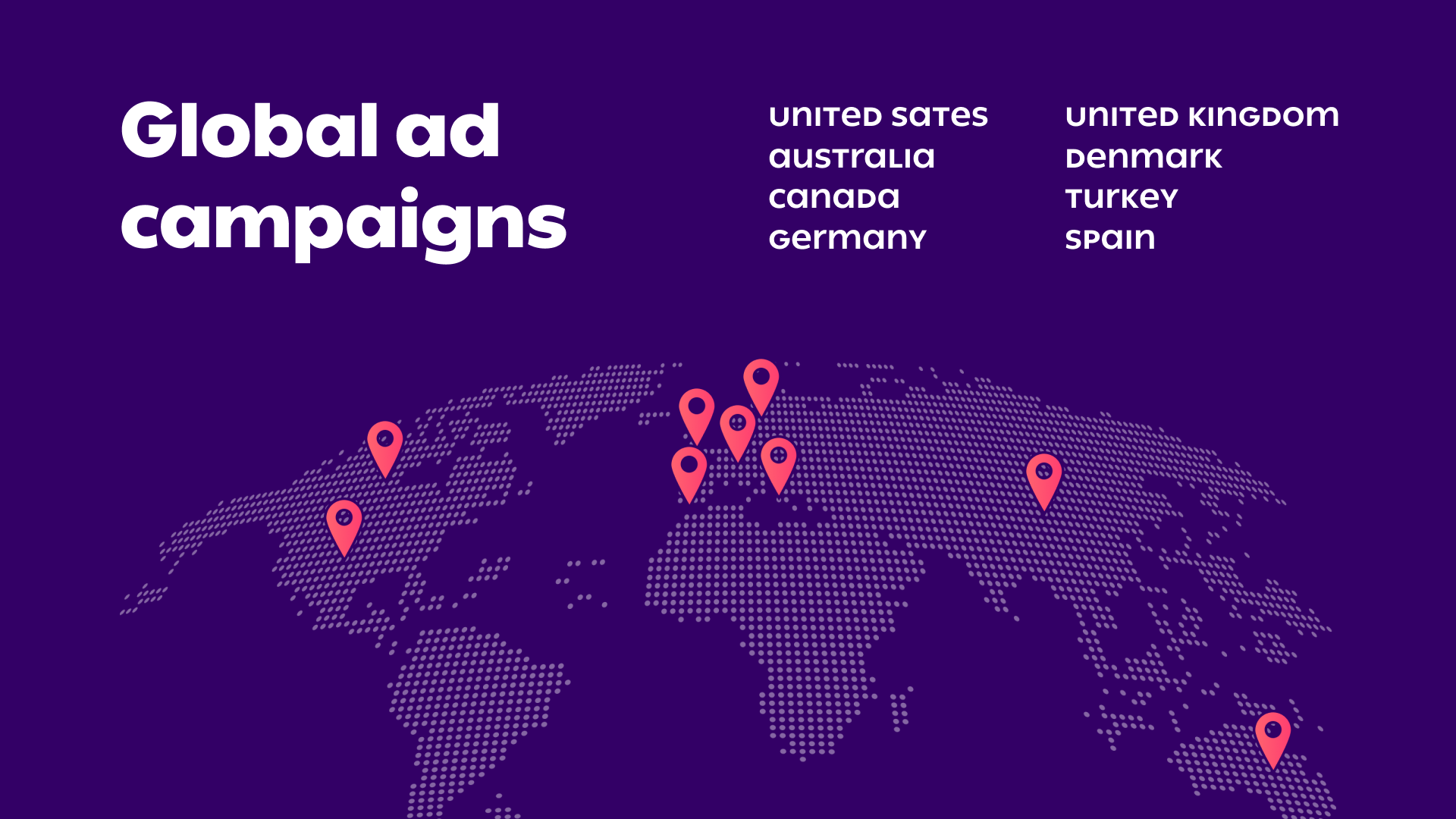
English is a universal language, but the truth is that not all your potential customers speak it, and you might lose valuable revenue by not localizing your ads.
This is when feed-based dynamic ads come in handy because you can create multi-language ad variations with little effort and display them depending on the user’s geographic location.
You can easily use data feeds to create multi-language dynamic ads in Creatopy that will be served to users based on their IP addresses. Creatopy also has network and DSP integrations, supporting a simple campaign launch process.
5.2. Feed-based product campaigns
Feed-based product ads are often used in remarketing campaigns, which entail targeting users who have previously shown interest in your products. Sometimes people need a little push to make the purchase and seeing an ad the next day might be just what does the trick.
You can create segments of users that have previously viewed product pages or added products to the cart without going through with the checkout process. Alternatively, you can target users who have already purchased items from you to motivate them to shop again.
5.3. Demographic targeting campaigns
With dynamic ads, you can also use first-party or third-party data to target users according to demographic information like gender, age, education, or even income. This way, you’ll ensure relevant ads reach the right people, significantly increasing your chances of conversion.
Let’s say you’re a university promoting enrollments for its bachelor’s, master’s, and PhD programs. You could run a dynamic advertising campaign with demographic targeting, so people with high school education see your ad variants for the bachelor’s program, and those with higher education see your master’s and PhD ads.
5.4. Behavioral targeting campaigns
Through behavioral prospecting for dynamic ad campaigns, it is possible to find people who are on the lookout for products or services like your own or who search for adjacent topics and present them with relevant ad content.
For instance, you can serve dynamic ads showing the latest buying and selling prices for cryptocurrency. Of course, you will once again need first-party or third-party data to segment those prospects interested in digital currencies based on their browsing behavior.
Dynamic Ads in Creatopy
At the moment, Creatopy offers three options for dynamic ad personalization. Two of them make use of geographic data and IP addresses, as follows:
You can generate multi-language dynamic ads in Creatopy by providing a link to a Google spreadsheet with all the translations and then making associations between the elements in the spreadsheet and those of your master design. This way, you have complete control over your translations and the message you convey.
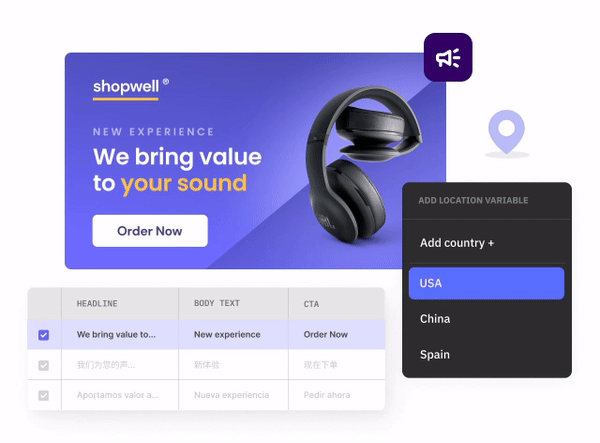
You also have the possibility to insert geographic-related content in your ad automatically by using in-content variables. Suppose you are promoting a hotel chain with establishments around the world. In this case, you could show people the same ad design and copy with a country variable that changes when necessary.
To display the right ad variant to a user, our system checks the IP address to pinpoint their location.
The third dynamic ad personalization option is represented by custom name variables that you can modify to create custom messaging for your specific strategy. It comes in handy when you’re doing direct publishing deals, and the publisher can provide you with their users’ details or when you want to have a personalized banner for users logged in to your platform.
If you want to learn more about our platform’s dynamic ad capabilities, check out our article on creative distribution and optimization in Creatopy.
Final Thoughts
Dynamic ads give customers what they want—a higher level of personalization. As a result, they are top-performing and worth investing in because the ROI is more often than not a guarantee.
They are suited for several different campaigns, and you can get them up and running in no time with the right tools. Plus, dynamic ads require less optimization afterward, simplifying things.
What’s your take on dynamic ads? Do you plan to incorporate them into your marketing strategy?


